France is
a wonderful country of specialty products; from
wines and cheeses to not least strange dynamic drivers
not found anywhere else on this planet. Take at look at PHY-HP, Fertin and Supravox and you will
find drivers designed for open baffles, horns or large
vented Onken-type cabinets.
Supravox has an extensive range of paper cone drivers,
from 5" to 15". All made in the classical
tradition with lightweight paper cones, voice coils wound
on paper formers and corrugated, coated paper surrounds.
I've had the opportunity to play around with the 215GMF
and the 215RTF, the latter with a 25 mm voice coil and a
somewhat smoother frequency response compared to the
present 215GMT.
First time you have the 215GMF
at hand and look and the TS data, you wonder what a ~12
grams paper cone with a suspension providing an Fs of 65
Hz can do. Will this driver really play any bass? One of
the suggested applications of this driver is a two-way
construction with a large horn taking over from around
500 Hz. The 215GMF is sitting in a large Onken-type
cabinet and I have carefully tried to calculate the
volume and vent dimensions of this cabinet and Mr. Thiele
and Mr. Small may think that some people really don't
give a damn about what they have done. I calculate a net
volume of 104 liter and a port are of 312 cm^2 and a
length of 300 mm, thus a vent tuning of 38 Hz. This
provides a frequency response as seen in the graph, green
curve. Well, if a constructor of modern hifi loudspeakers
would present this at an AES meeting, I guess he'd be
ridiculed. But this kind of drivers are living their own
life and mounting the 215GMF in my 95 liter Tannoy test
cabs, tuning the ports to around 40 Hz, I got a bass
response much better than expected.
Setting up a two-way with a point of crossover around
1200 Hz wasn't that difficult, but the sound just wasn't
right. The dip between 1 and 2 kHz simply ruined vocal
presentation and the driver's been on the shelf for quite
some time until I decided to take a second look at the
dust cap. Read below.
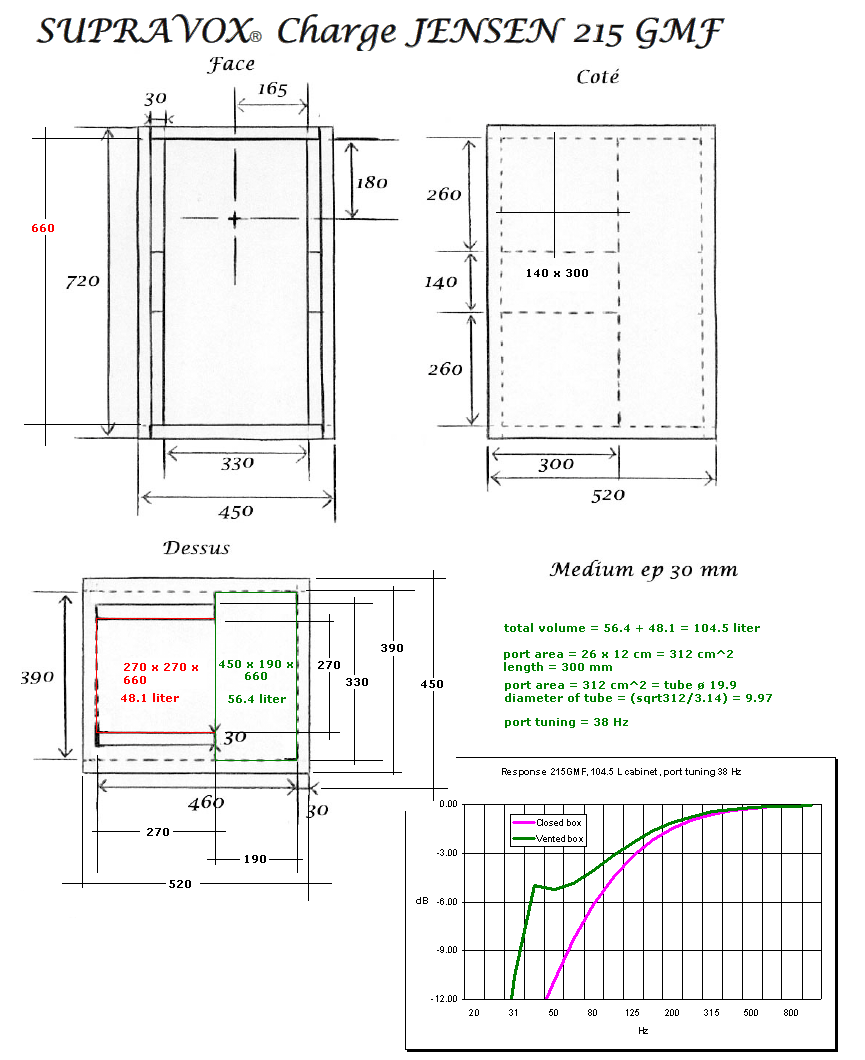
One
of the cabs suggested for the 215GMF driver. I'm not sure
where the "Jensen" comes from. This is a
very Danish name and maybe someone can tell me what
Jensen has to do with this. Jensen drivers/US?
- thanks to Teit/DK for mailing me this
link:
http://www.pmillett.com
http://www.pmillett.com/vintage_data.htm
-from the 2nd link you can download a Jensen catalog
(12MB) and
an Altec home-hifi catalog too (4 MB)
- great stuff!
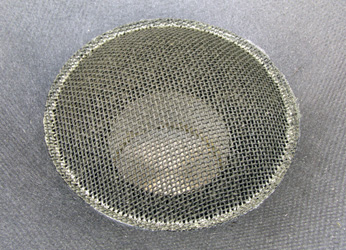 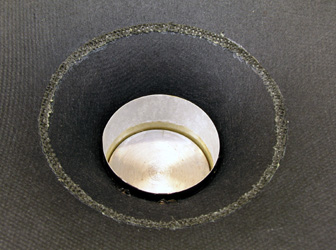
215GMF
before and after removal of dust cap. Note paper used for
voice coil former.
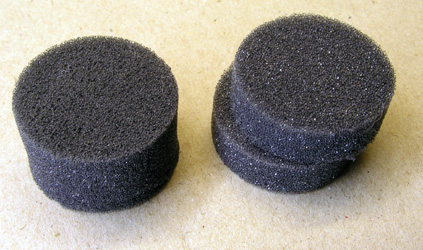 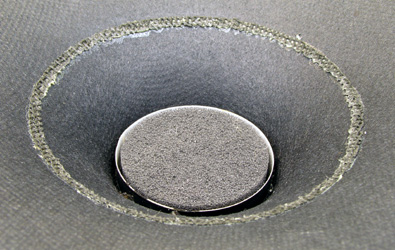
Polyester foam plugs = 34 mm diameter, 20 mm height.
Actually I made 20 plugs before I had two being straight.
I suggest making plugs from 10 mm polyester foam and
gluing them together. Much easier.
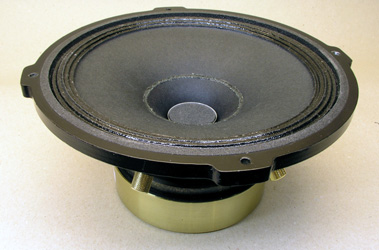
New appearance of 215 GMF
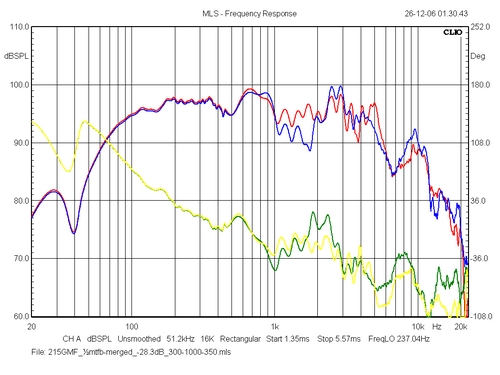
Blue = driver as-is. Red = after removal of dust cap.
Yellow and green = minimum phase.
Measurements merged with nearfield response at 450 Hz.
Driver in 95 litres vented cab.
Measurements taken at 1 m distance, 2.83 volts.
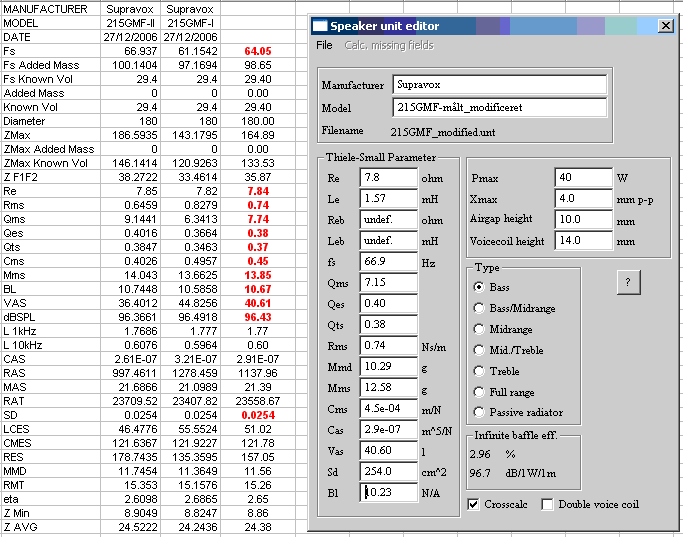
New TS data generated and checked in LspCAD. All data
seems to fit well with cross calculation.
Supravox 215 GMF + Fountek
NeoPro5i
2006
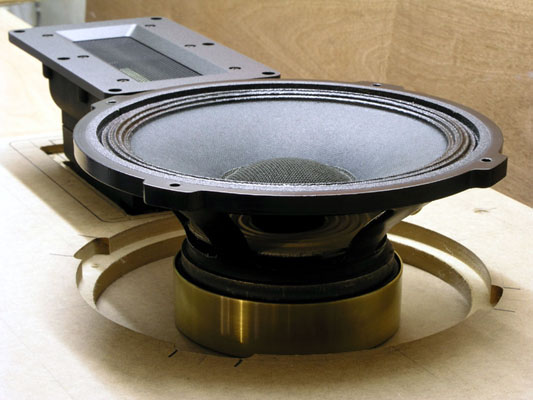 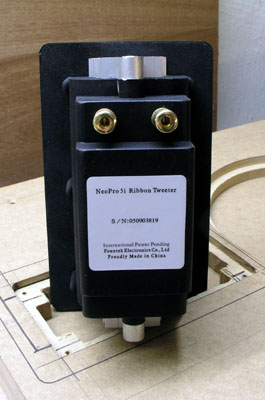
I had the
opportunity to borrow two Fountek
NeoPro5i ribbons, thanks to Gorm at GMSound, and
tried setting up a two-way system from this
ribbon and the 215GMF driver. This was before the
215GMF tweaks. I used my Tannoy test cabs, 95
liter and routed some new front panels to
accommodate the drivers. The NeoPro5i is a huge
ribbon and really goes low making points of
crossover as low as 1 kHz possible. And the
sensitivity is extreme, 100 dB/2.8V. If you need
a versatile tweeter for your high efficiency
dynamic drivers, go for this one.
As seen below, the drivers were crossed around
1200 Hz in order to try getting rid of the
terrible 215GMF performance between 1 and 2 kHz.
A rather rugged decline is seen for the Supravox
and somehow this still appeared to colour the
overall presentation. Vocals, again, were the
problem, so the project was ditched.
I don't have the Neos
any more and will try to mate the tweaked Supra
with a tweeter fitted with a waveguide, providing
sufficient sensitivity and allowing a reasonably
low point of crossover. You don't find many domes
with 95-96 dB sensitivity, if any, of reasonable
quality. We have to use acoustic amplification,
ribbons or compression drivers fitted with horns.
|
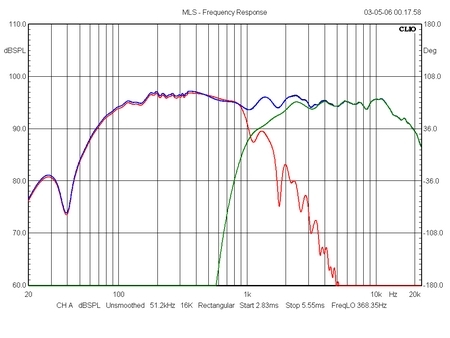 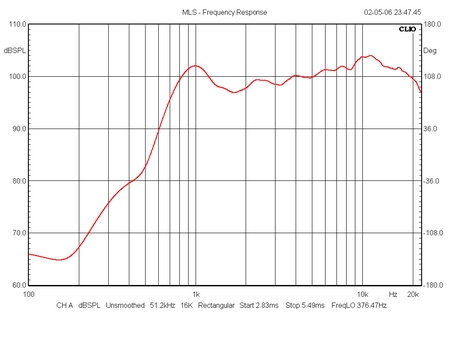
Left:
Individual and summed response of drivers from crossover.
Right: Fountek NeoPro5i on the same baffle without
crossover. Excellent performance.
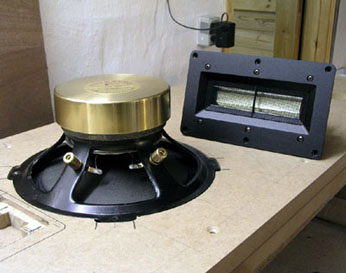 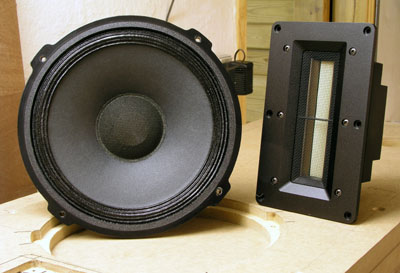
Supravox 215GMF + JBL
LE26-waveguide
Having done the 215GMF
mods, I tried an old JBL LE26 tweeter, which I've
found to be an excellent treble driver, having an
unusual 94-95 dB sensitivity. JBL seems to have
solved the 13 kHz peak problem from the former
LE25. The four LE26s I have for the moment, do
not exhibit this problem and fitted with a
modified Monacor waveguide, we gain an extra 5-6
dB sensitivity around the point of crossover,
reducing distortion significantly. The best L26 I
have go straight to 17 kHz. Not bad for an old
conical paper coned tweeter. I quickly made a
plywood faceplate for the LE26, not particular
nice, but it works and fits in on top of the
215GMF in my Tannoy cabs as seen below.
The usual measurements were made, and LspCAD
helped in getting a crossover working with a
point of crossover around 2.3 kHz. There's still
some dip from the Supra right above 1 kHz, but
nothing that could disturb my peace from this
arrangement. The LE26 fitted with a waveguide is
so good I wish I could find a similar tweeter for
my other high-efficiency projects. But this
driver is only to be found on eBay from time to
time.
|
.jpg) .jpg)
.jpg) .jpg)
.jpg)
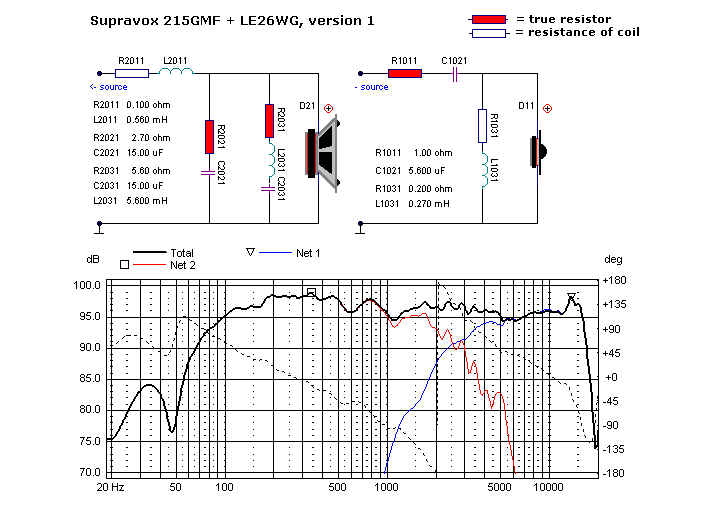
Simulated
- and fine-tuned - crossover for the two-way set-up.
An impressive 96-97 dB/2.8V seems to the results - and so
it feels when connecting to
the amplifier. This speaker really doesn't need a lot of
power. 5-10 watts will do.
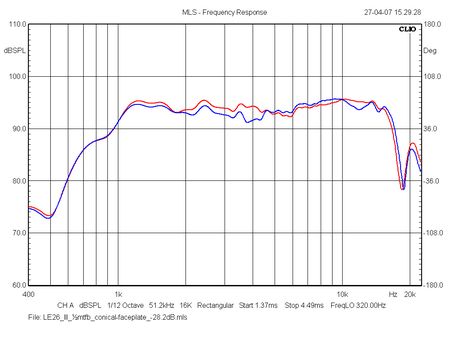 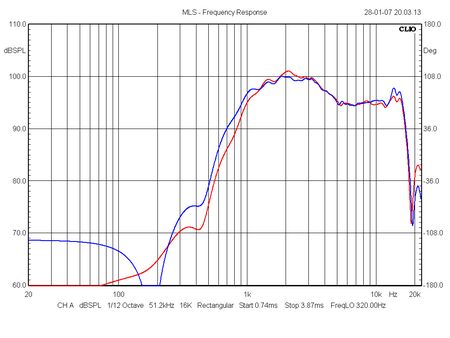
Left: Two of my best LE26 drivers with
flat faceplate. The LE26 comes with a slightly convecs
faceplate, not as good as a flat faceplate. Simply
turning the faceplate upside down, provides a better
response.
Right: My first two LE26s fitted with the modified
Monacor waveguide. At 2-3 kHz we reach a 100 dB
sensitivity. The impedance of the LE26 is on the low
side, 4-5 ohms.
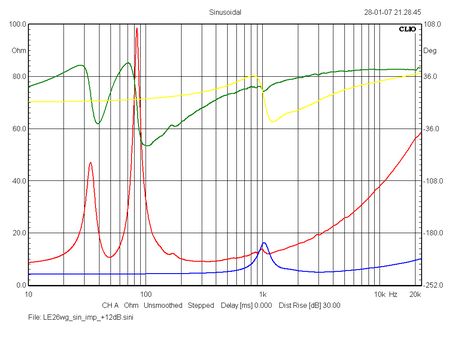 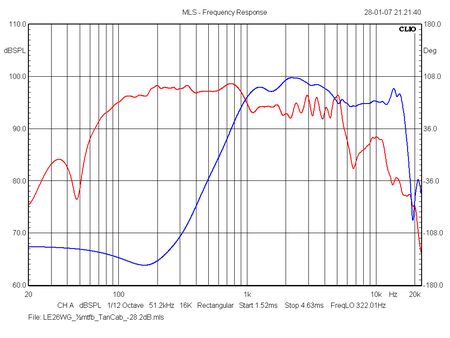
Left: Impedance of LE26 and 215GMF in
Tannoy test cab. Right: SPL from drivers in cabinet.
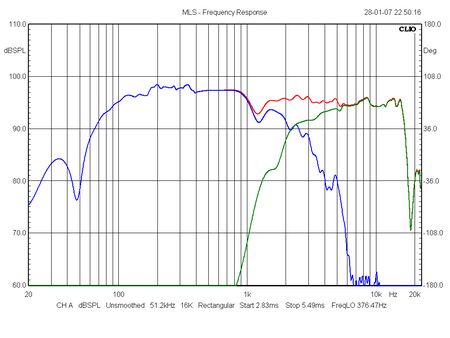
Individual
and summed response of drivers driven from crossover
network.
I played this set-up for quite some time
and there are pros and cons. It can play enormously loud
- and it hard not to do so. Acoustic Live from Nils
Lofgren was on the CD-player many times and impressed
quite a few visitors. The speed, the transient attack is
phenomenal. Even vocals are handled reasonably well. The
treble is so good, it's become my first choice in all my
high-efficiency experiments. The 215GMF is not
un-coloured and I guess an optimised cabinet could lift
its performance even further. I'm thinking of the designs
from Decware: http://www.decware.com/newsite/mainmenu.htm. The NFX design
might be an option for the 8" Supravox drivers
combined with the LE26-waveguide.
|